In the fast-paced world of SaaS (Software as a Service), competition is rife — meaning that customer acquisition is everything.
PPC (Pay-Per-Click) advertising is one of the most powerful tools around when it comes to driving qualified traffic, generating leads, and scaling growth — but only when it’s done right.
Whether you’re new to PPC or looking to refine an existing strategy, this guide brings together expert insights, practical tips, and SaaS-specific tactics to help you get more from every click.
We’ll explain why PPC is crucial for SaaS businesses – covering how to do it, what’s needed, and all the best practices you’ll need for fruitful campaigns.
What is PPC for SaaS and why is it important?
PPC is the performance end of Paid Media — capturing leads from the bottom of the marketing funnel.
Through platforms like Google Ads, LinkedIn and other social media platforms, you can use it to help drive qualified traffic to your sites or products.
For SaaS companies in particular, this typically means encouraging users to sign up for a free trial, book a demo, or start a subscription.
The SaaS industry is so competitive and saturated that businesses need to stand out. Helping to combat long sales cycles and niche audiences, PPC lets you get in front of the right people at the right time.
Done well, it can be one of the best ways to scale growth and capture demand generated by awareness and consideration activity.
What is SaaS?
SaaS stands for Software as a Service.
In layman’s terms, it’s cloud-based software that users access via a subscription (like Zoom, HubSpot, or Slack). Instead of buying a licence once, customers typically pay monthly or annually for continued access to the software and updates.
SaaS businesses rely heavily on recurring revenue, which makes getting customers in the door, keeping them there, and scaling the process vital to success.
That’s exactly where PPC can help.
How does PPC work for SaaS?
PPC for SaaS companies works a bit differently.
Unlike ecommerce businesses, for example – where conversions happen immediately – SaaS PPC usually drives traffic to a specific landing page, often offering a free trial, demo, or sign-up.
The goal is to capture leads so they can be nurtured into paying subscribers.
It also allows them to attract high-intent users through paid ads on platforms like Google, LinkedIn, and Meta.
The company bids on specific keywords or audience profiles, and pays each time someone clicks their ad.
Success depends on a variety of factors like choosing the right keywords, writing clear and compelling ad copy, building attractive, high-converting landing pages, advanced audience segmentation and tracking key metrics.
Here’s a quick breakdown of what those metrics are and what they mean.
Cost per acquisition (CPA) – How much you spend on ads to acquire one customer or lead.
Conversion rate – The percentage of visitors who take an action, like signing up for a trial after clicking your ad.
Lifetime value (LTV) – The total revenue a customer is expected to generate over the time they use your software.
How to align your PPC campaigns with the SaaS customer journey
Every time a potential customer views an ad, you need to consider that they are probably all at different stages of their buying journey. But whether it’s initial awareness or the final decision, your paid ads need to meet them there.
To do this, your ads should focus on each stage of the user journey to best appeal to customers — no matter what stage they’re at.
Here are some ways you can better optimise your ads and campaigns to the customer journey of your SaaS clients.
Awareness stage (top of funnel)
The aim of top-of-funnel PPC campaigns is to capture attention and build brand awareness among users who are just starting to identify their problem.
Here, you want to focus more on offering educational value and industry insights rather than pitching your services directly. This might involve using sitelinks to drive users to informative, trust-building resources like blog posts, industry reports and webinar landing pages.
Your keyword strategy may differ at this point as well — focusing more on problem-oriented search queries relevant to a SaaS company’s niche. For example, “how to collaborate remotely”, or “ways to improve team productivity” etc.
Because top-of-funnel PPC focuses on brand awareness and building trust, your landing pages shouldn’t go in for the hard sell. Instead, usher them to resources like eBooks and guides — where they can get extra information — and use the page as an opportunity to score some micro conversions (email newsletter sign-ups, for example).
Consideration stage (middle of funnel)
The goal of middle-of-funnel PPC campaigns, ads and pages is to target potential customers that are in the research phase — they know what the problem is and are actively looking for solutions.
Your keyword strategy here will be more aggressive – targeting solution-based terms like “best CRM for small businesses”, or “alternatives to [competitor]”, for example.
Ad copy should also follow suit — emphasising value propositions and key features so prospective customers can get a feel for a company’s SaaS offering.
Targeting middle-of-funnel content on your landing pages should aim to drive traffic to product comparison pages, feature overviews and success stories or case studies — to highlight to researching customers why a company’s product will help them and why it’s the best option for them.
Decision stage (bottom of funnel)
In the decision stage, the goal is to entice a customer over the finish line – converting users who are ready to choose a solution.
Keyword strategies for bottom-of-funnel PPC strategies should be high-intent and packed with conversion-ready terms. For example, “get a CRM free trial”, or “book a demo with [brand]”.
Content around the ads and landing pages in this phase should drive urgency from the customer – highlighting promotional and limited-time offers and free demos.
Landing pages need to make it easy to sign up, start a trial, request a demo or receive a quote. This can be done by clear CTAs that reinforce the need to take action.
Also, adding trust signals testimonials can help persuade a customer to choose your brand. Whether it’s the top or bottom of the funnel, including elements like client logos, security badges and certifications, and testimonials or case studies can make all the difference when building that trust.
Top tips and PPC strategies
To make sure your PPC campaigns are stronger and go off without a hitch, here are some quick tips and guidelines to follow.
Segment campaigns by funnel stage – Avoid blending awareness and purchase-intent keywords. Each should have its own budget, message, and landing page.
Use high-converting landing pages – Generic homepages rarely convert. Customise pages based on the user’s intent and ad message.
Leverage remarketing – Re-engage visitors who didn’t convert with tailored ads that match their previous touchpoint.
Track trial-to-paid conversions – It’s not just about lead volume. Optimise for users who become paying customers, not just sign-ups.
Test different CTAs – “Book a Demo” vs. “Try Free for 14 Days” can appeal to different user mindsets. It’s worth testing multiple CTAs to find the highest-performing one for your niche.
Include negative keywords to avoid wasted spend – Exclude search terms that attract the wrong audience — like people looking for “free alternatives” or “SaaS jobs” — to prevent irrelevant clicks that drain your budget.
Use competitor keyword targeting strategically – Bidding on competitor brand names can capture high-intent users exploring options, but make sure your ad highlights a clear and compelling difference to stand out.
Kickstart your PPC campaigns with MRS Digital
With over 25 years of digital marketing experience, MRS Digital’s award-winning team has helped businesses across a range of industries drive high-quality traffic, increase conversions, and maximise return on ad spend.
Whether you’re starting from scratch or want to optimise existing campaigns, our PPC specialists are here to help.






